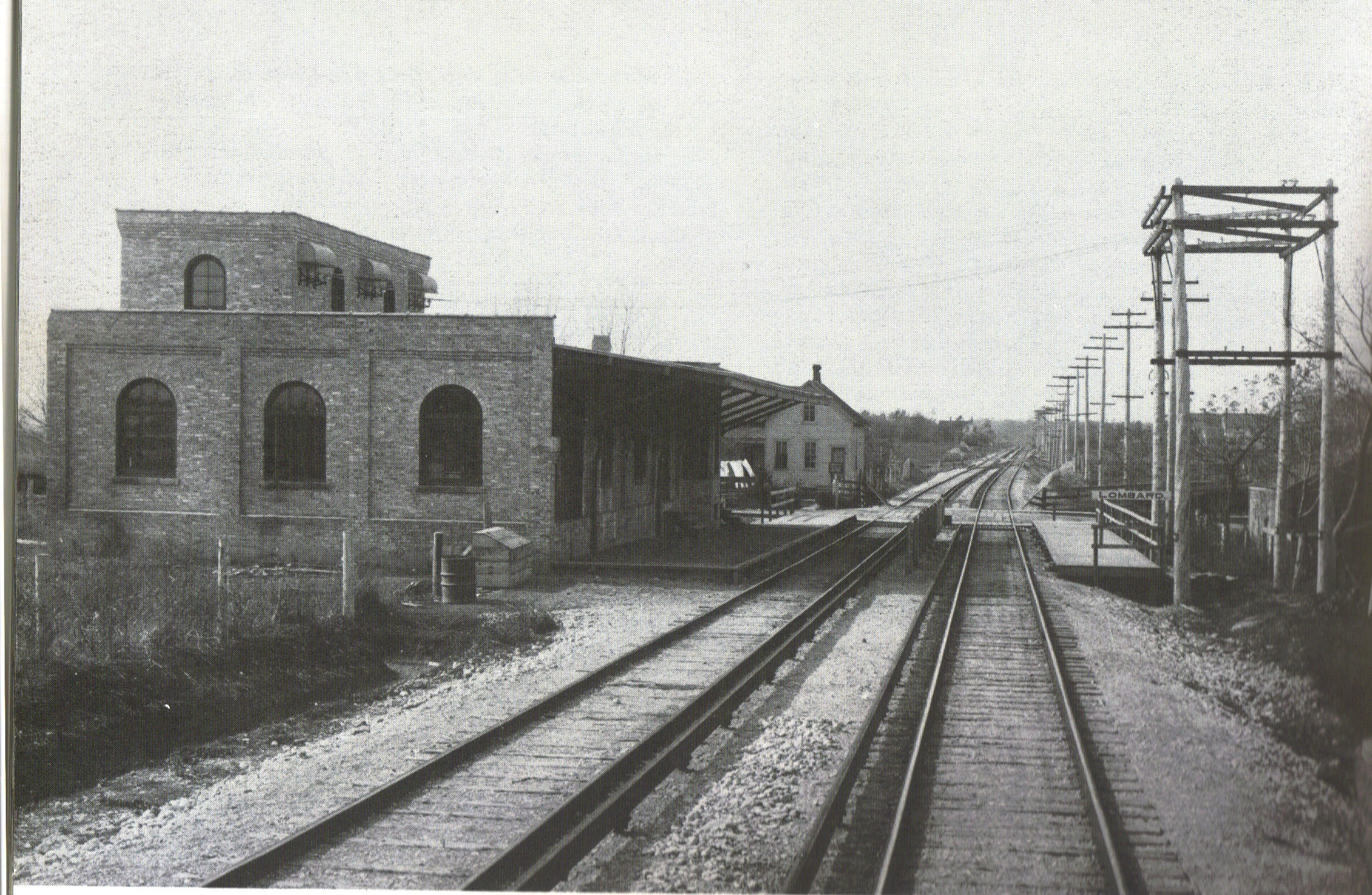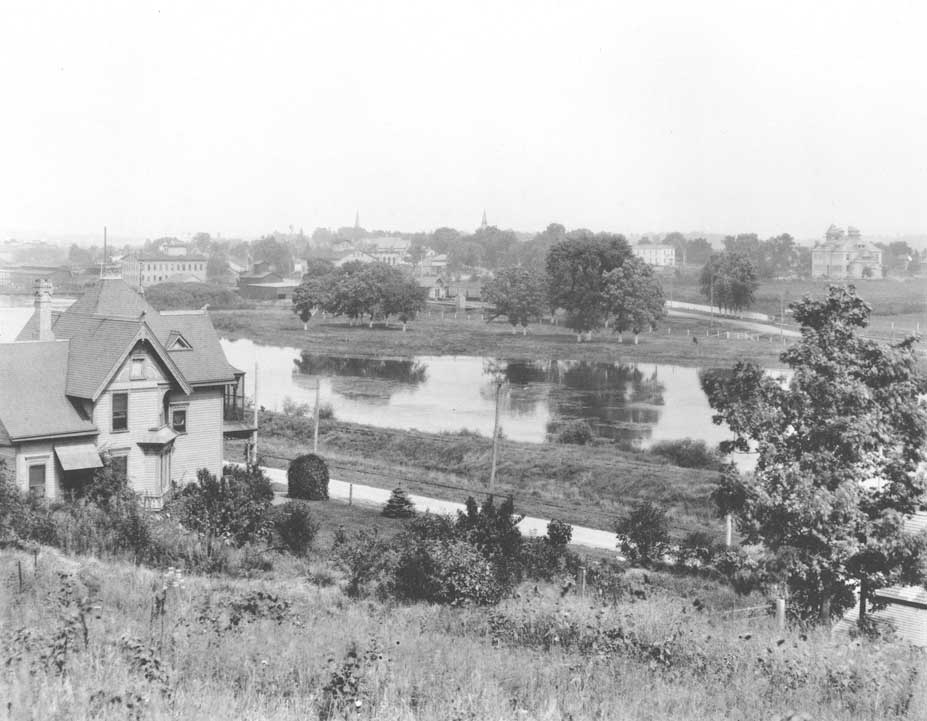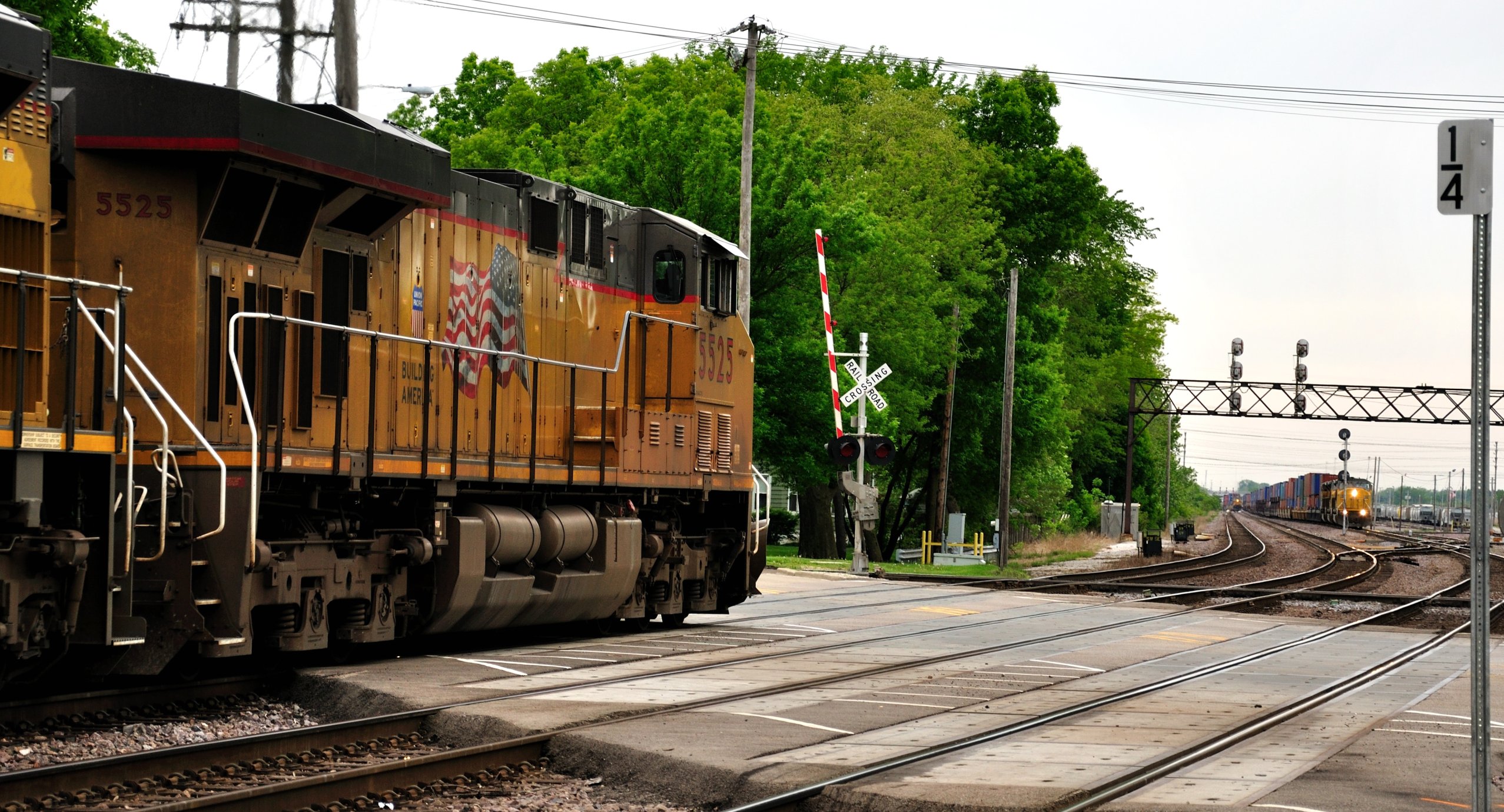|
Chicago Aurora And Elgin Railroad
The Chicago Aurora and Elgin Railroad (CA&E), known colloquially as the "Roarin' Elgin" or the "Great Third Rail", was an interurban railroad that operated passenger and freight service on its line between Chicago and Aurora, Batavia, Geneva, St. Charles, and Elgin, Illinois. The railroad also operated a small branch to Mt. Carmel Cemetery in Hillside and owned a branch line to Westchester. Wounded by the increased use of automobiles after World War II, the CA&E abruptly ended passenger service in 1957. Freight service was suspended in 1959, and the railroad was officially abandoned in 1961. Most of the right-of-way has since been converted to the Illinois Prairie Path rail trail. The Aurora Elgin and Chicago Railway Origin (1899–1901) The first known attempt to create an electric railway between the metropolis of Chicago and the Fox Valley settlement of Aurora was in late 1891. By this time, passengers in Aurora and Elgin were served by steam engines. Elgin was serve ... [...More Info...] [...Related Items...] OR: [Wikipedia] [Google] [Baidu] |
Chicago, Illinois
(''City in a Garden''); I Will , image_map = , map_caption = Interactive Map of Chicago , coordinates = , coordinates_footnotes = , subdivision_type = Country , subdivision_name = United States , subdivision_type1 = State , subdivision_type2 = Counties , subdivision_name1 = Illinois , subdivision_name2 = Cook and DuPage , established_title = Settled , established_date = , established_title2 = Incorporated (city) , established_date2 = , founder = Jean Baptiste Point du Sable , government_type = Mayor–council , governing_body = Chicago City Council , leader_title = Mayor , leader_name = Lori Lightfoot ( D) , leader_title1 = City Clerk , leader_name1 = Anna Valencia ( D) , unit_pref = Imperial , area_footnotes = , area_tot ... [...More Info...] [...Related Items...] OR: [Wikipedia] [Google] [Baidu] |
Illinois Prairie Path
The Illinois Prairie Path (often called the Prairie Path and abbreviated IPP) is a network of of bicycle trails, mostly in DuPage County, Illinois. Portions of the trail extend west to Kane County and east to Cook County. Most of the trail is categorized as rail-to-trail, meaning that the bicycle path is built atop a converted former railroad right of way. In the case of the Prairie Path, the vast majority of its routing runs on the former right-of-way of the Chicago Aurora and Elgin Railroad. May Theilgaard Watts is credited for a letter written in 1963 that initiated the first project in what became a widespread rail-to-trails program of land use across the United States. In August 2008, the Illinois Prairie Path was inducted into the Rails-to-Trails hall of fame. Routing The Illinois Prairie Path consists of three distinct branches originating from a point just west of downtown Wheaton (). The northwest branch is called the Elgin Branch and runs approximately to Elgin, ... [...More Info...] [...Related Items...] OR: [Wikipedia] [Google] [Baidu] |
Carpentersville, Illinois
Carpentersville is a village in Kane County, Illinois, United States. The population was 37,983 at the 2020 census. Geography Carpentersville is located at (42.121156, -88.274679). According to the 2010 census, Carpentersville has a total area of , of which (or 97.57%) is land and (or 2.43%) is water. History Julius Angelo Carpenter (August 19, 1827 – March 30, 1880) was the founder of Carpentersville, Illinois and its first prominent citizen. Carpenter came with his family from Uxbridge, Massachusetts and settled near the Fox River, along with his father Charles Valentine Carpenter and his uncle Daniel. Angelo was the first person to settle Carpentersville. Carpenter built the settlement's first store, bridge, and factory. He served two consecutive terms in the Illinois House of Representatives. In 1837, the brothers, en route to the Rock River, made camp along the east bank of the Fox River to wait out the spring floods that made continuing their oxcart journey impo ... [...More Info...] [...Related Items...] OR: [Wikipedia] [Google] [Baidu] |
Glen Ellyn
Glen Ellyn is a village in DuPage County, Illinois, United States. A suburb located due west of downtown Chicago, the village has a population of 28,846 as of the 2020 Census. History Glen Ellyn, like the neighboring town to the east, Lombard, had its genesis in an 1833 claim by two brothers from the Finger Lakes region of New York, Morgan and Ralph Babcock. The two claimed property in a large stand of timber near present-day St. Charles Road and the East Branch of the DuPage River. The brothers also arranged for a claim for their New York neighbor Deacon Winslow Churchill, who arrived in 1834 along with some of his adult children and their families. The nascent settlement became known as Babcock's Grove, and it included property currently part of both Glen Ellyn and Lombard. Up the trail from the river to the west was a five-cornered intersection. In 1835, Daniel Fish built a cabin there, and other settlers followed. By the 1840s the intersection was called Fish's Corners a ... [...More Info...] [...Related Items...] OR: [Wikipedia] [Google] [Baidu] |
West Chicago, Illinois
West Chicago is a city in DuPage County, Illinois, United States. The population was 27,086 at the 2010 census. It was formerly named Junction and later Turner, after its founder, John B. Turner, president of the Galena and Chicago Union Railroad (G&CU) in 1855. The city was initially established around the first junction of railroad lines in Illinois, and today is still served by the Metra service via West Chicago station. Geography West Chicago is located at . According to the 2010 census, West Chicago has a total area of , of which (or 97.75%) is land and (or 2.25%) is water. History Erastus Gary, of Pomfret, Connecticut, homesteaded on the banks of the DuPage River, just south of West Chicago's present day city limits in the 1830s. His son became "Judge" Elbert Henry Gary, the first CEO of America's first billion-dollar corporation, U.S. Steel, and for whom Gary, Indiana, is named. Gary also helped bring brothers Jesse and Warren Wheaton, founders of nearby Wheaton, ... [...More Info...] [...Related Items...] OR: [Wikipedia] [Google] [Baidu] |
Freight Trains
Rail freight transport is the use of railroads and trains to transport cargo as opposed to human passengers. A freight train, cargo train, or goods train is a group of freight cars (US) or goods wagons ( International Union of Railways) hauled by one or more locomotives on a railway, transporting cargo all or some of the way between the shipper and the intended destination as part of the logistics chain. Trains may haul bulk material, intermodal containers, general freight or specialized freight in purpose-designed cars. Rail freight practices and economics vary by country and region. When considered in terms of ton-miles or tonne-kilometers hauled per unit of energy consumed, rail transport can be more efficient than other means of transportation. Maximum economies are typically realized with bulk commodities (e.g., coal), especially when hauled over long distances. However, shipment by rail is not as flexible as by the highway, which has resulted in much freight being h ... [...More Info...] [...Related Items...] OR: [Wikipedia] [Google] [Baidu] |




